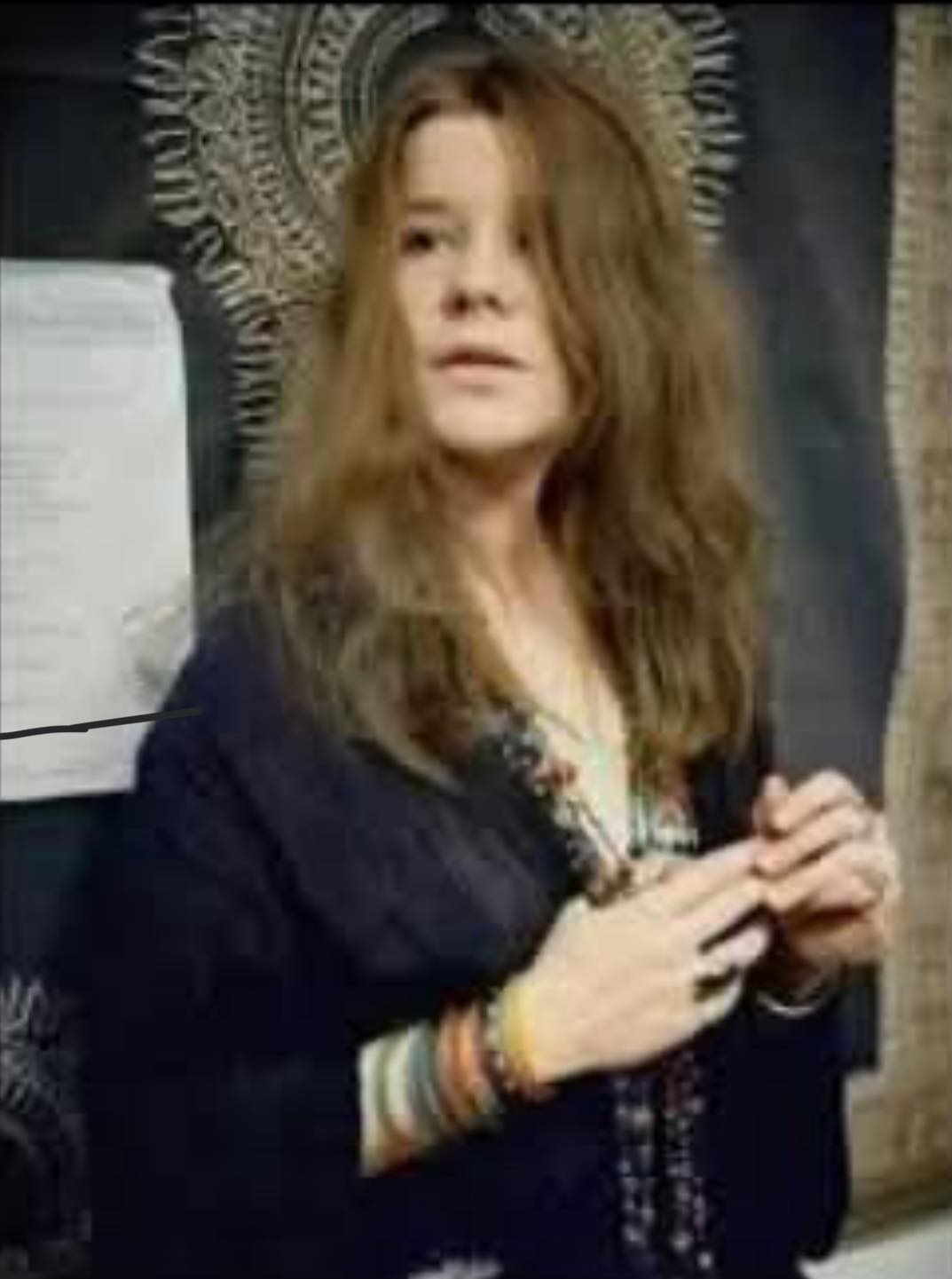The Girl Who Refused to Stay Silent
Janis Joplin was born in Port Arthur, Texas, in 1943 to Seth and Dorothy Joplin. Her father worked as an engineer at Texaco, and her mother was a registrar at a local business college. The Joplins lived in a modest middle-class neighborhood, but Janis stood out from the start. From an early age, she was drawn to records by Bessie Smith, Lead Belly, and Odetta, captivated by the emotional power of blues and folk music. In a refinery town where conformity was the norm, her growing love for this music made her feel different from those around her.
During her years at Thomas Jefferson High School in the late 1950s, Janis faced relentless bullying. Classmates mocked her appearance, acne, and weight. She wore men’s shirts and sandals, refused to style her hair according to local beauty trends, and rejected the pastel dresses popular at the time. Some peers publicly humiliated her, leaving her socially isolated. This rejection deeply affected her sense of self and fueled her desire to break free from Port Arthur’s rigid expectations.
Despite her social struggles, Janis excelled in academics and showed an insatiable curiosity. She loved reading and had a special interest in art and literature. At home, her parents encouraged education but were puzzled by her growing fascination with nonconformist ideas and African American culture, which was not widely accepted in Port Arthur during the 1950s. She sang in the church choir as a child, but by her teenage years, she started attending small gatherings in nearby Beaumont and Houston, where folk and blues music could be shared without judgment.
In 1960, after graduating high school, Janis enrolled at Lamar State College of Technology in Beaumont but quickly transferred to the University of Texas at Austin in 1962. On campus, she became known for carrying an autoharp and singing with an intensity that drew crowds. Her blues-influenced voice was unlike anything most students had heard. She performed barefoot at student gatherings and coffeehouses, captivating audiences with songs that revealed her inner pain and defiance.
However, university life brought more personal challenges. In 1962, a fraternity cruelly named her “Ugliest Man on Campus,” an incident that deeply hurt her and reinforced her sense of alienation. Around this time, she began performing regularly at local venues like Threadgill’s, where she found support from fellow musicians. These performances became a rare refuge, offering the acceptance she couldn’t find in her everyday life.
By 1963, Janis made a life-changing decision to leave Texas. She hitchhiked to San Francisco, drawn by the city’s vibrant folk and blues scene and its reputation for welcoming outsiders. Arriving with very little money, she lived in shared apartments, performed in small clubs, and developed her signature raspy, emotional singing style. While the city offered more freedom, it also brought hardships. She often struggled to pay rent and buy food, and letters she sent home during 1963 and 1964 revealed moments of loneliness and uncertainty alongside her excitement about performing.
Her early experiences in Port Arthur—marked by social rejection, a fierce need for self-expression, and a deep connection to music—became the emotional foundation for her career. Every song she sang in the years that followed carried echoes of the teenage girl who was laughed at in high school hallways and the young woman who left Texas with determination burning in her voice.
By the time Janis returned to San Francisco in 1966 to join Big Brother and the Holding Company, she had transformed her pain into artistic power. The raw, unapologetic emotion in her performances was a direct result of the struggles she endured from the 1940s through the early 1960s, proving that the foundation of her artistry was built long before she became a rock icon.
Her earliest battles for acceptance remained etched in her music, each note holding the truth of a girl who fought to be heard.
Credit to the rightful author <
